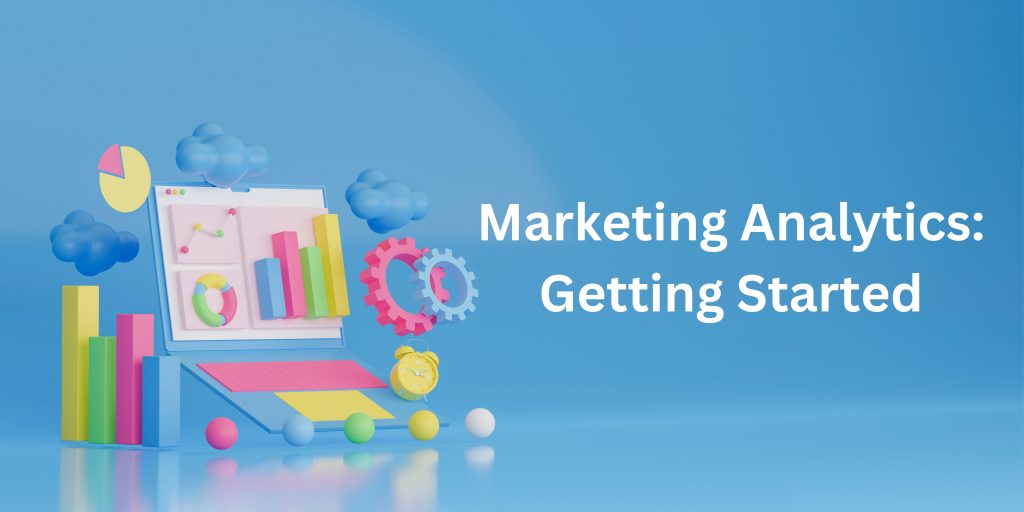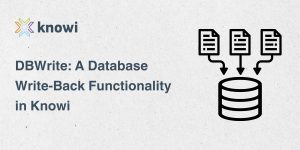Marketing analytics is essential for evaluating how well marketing efforts are working, from advertising campaigns to sales promotions. It helps marketers create effective product strategies and engagement plans that make a real business impact.
Marketing analytics involves tracking, managing, and analyzing data from various sources like sales records, external data, and website analytics. By uncovering trends and performance insights, marketers can make informed decisions. For example, if a company notices that their email campaigns have low open rates but high click rates, they can experiment with different subject lines to boost opens and overall engagement.
Today, with the abundance of marketing data and advanced analytics tools, companies can analyze almost every aspect of their marketing efforts. This capability offers a 360-degree view of customer interactions, allowing marketing teams to refine their strategies to better meet consumer needs and enhance the overall effectiveness of their campaigns.
Data Sources in Marketing Analytics
Marketing analytics involves collecting and analyzing data from various sources to enhance marketing strategies and optimize consumer engagement. Data in marketing can be categorized into internal and external sources. Effective analysis often requires synthesizing these data points to uncover correlations and insights that drive impactful marketing decisions.
1. Internal Data: This type of data originates within your organization and provides insights into specific marketing efforts and consumer behaviors:
- Customer Data: Gathered through Customer Relationship Management (CRM) systems, website analytics tools, and marketing automation platforms, this data includes demographics, purchase histories, and online behaviors of your customers. Analyzing this data aids in segmenting customers and personalizing marketing approaches.
- Sales & Revenue Data: This crucial dataset tracks the performance of sales activities and measures the revenue generated by different marketing campaigns. It allows marketers to assess the return on investment (ROI) of their marketing efforts and adjust strategies accordingly.
- Media Data: Encompassing information on advertising efforts across various channels such as TV, print, digital advertising, and promotions, media data helps in evaluating the reach and effectiveness of each campaign. Analyzing this data provides insights into which channels deliver the best results in terms of audience engagement and conversion rates.
- Website & DTC Platform Data: Analytics tools track user behavior on websites and direct-to-consumer platforms, providing data on traffic, conversion rates, and content engagement. This information is vital for optimizing the user experience and improving the effectiveness of digital marketing efforts.
- Social Media Data: Involves metrics related to engagement, reach, and interactions on social media platforms. Analysis of this data helps understand brand sentiment, identify trends in consumer engagement, and optimize social media strategies for better engagement and conversion. Social media data also includes insights from social listening, which reveals how the product or brand is perceived online.
- Consumer Research Data: Surveys, focus groups, and other research methods provide qualitative insights into consumer attitudes and satisfaction levels.
- Brand Equity Studies: Assessments that help understand the value of a brand in the market, reflecting consumer perceptions and the brand’s strength.
2. External Data: External data is collected from sources outside your organization and includes:
- Syndicated Data:
- Nielsen: This agency measures consumer behaviors across diverse sectors such as consumer packaged goods, retail, and media. Nielsen offers valuable data on sales trends, market shares, and consumer preferences. Their subsidiary, NielsenIQ, specializes in exclusive retail analytics.
- IRI (Information Resources Inc.): Known for its retail insights and shopper behavior analyses, IRI collects data from point-of-sale systems, loyalty programs, and other sources. Its cloud-based platform integrates various data types including purchase, media, social, and loyalty, offering a comprehensive view of consumer interactions.
Marketing Metrics
In marketing analytics, various metrics and concepts play critical roles in assessing the effectiveness of marketing strategies and optimizing business outcomes. These metrics range from simple measures like monthly sales growth to more complex calculations such as the cost of customer acquisition. Here’s an overview of key metrics:
- Return on Investment (ROI): A fundamental metric that assesses the profitability of a marketing campaign. It’s calculated by dividing the net profit from the campaign by the total investment. A positive ROI indicates a successful campaign, whereas a negative ROI suggests a loss.
- Customer Acquisition Cost (CAC): This metric calculates the average cost of acquiring a new customer, derived by dividing total marketing and sales expenses by the number of new customers gained during a specific period. Businesses aim to reduce CAC while increasing customer lifetime value (CLTV).
- Customer Lifetime Value (CLTV): Estimates the total revenue a business can expect from a single customer over the duration of their relationship. It’s calculated by multiplying average purchase value by purchase frequency and then by the average customer lifespan. Strategies to enhance CLTV include loyalty programs and exceptional customer service.
- Attribution Modeling: This process helps assign credit for conversions across various touchpoints in a customer’s journey. Common models include last-touch, first-touch, and multi-touch, each attributing conversion credits differently based on the customer’s interactions with marketing channels.
Digital Metrics:
- Conversion Rate: Measures the percentage of visitors who complete a desired action, such as making a purchase. It is calculated by dividing the number of conversions by the total number of visitors.
- Click-Through Rate (CTR): Indicates the effectiveness of online advertising or email campaigns, calculated by dividing the number of clicks by the number of impressions.
- Cost per Click (CPC): Commonly used in pay-per-click (PPC) advertising to gauge the cost incurred each time an ad is clicked. The goal is to keep CPC low while maximizing conversion rates.
- Bounce Rate: Represents the percentage of visitors who leave the site after viewing only one page. A high bounce rate could suggest that the content is not engaging or the site is not user-friendly.
- Social Media Engagement: Measures interactions like likes, shares, and comments on social media. High engagement rates generally indicate that content is effectively resonating with the audience.
Core Applications of Marketing Analytics
Marketers leverage marketing analytics in many ways to gain a data-driven edge in today’s competitive landscape. Here’s a breakdown of how marketing analytics empowers marketers across various aspects of their efforts:
1. Understanding Customer Behavior
- Customer Segmentation: Marketing analytics helps businesses segment their customer base into distinct groups based on demographics, behavior, and preferences. This allows for targeted marketing campaigns that resonate with each segment, leading to higher engagement and conversions.
- Customer Journey Mapping: By analyzing customer touchpoints across various channels (website, social media, email), marketers can map the customer journey. This understanding helps identify areas for improvement and optimize the customer experience throughout the buying process.
2. Optimizing Marketing Campaigns
- Campaign Performance Measurement: Marketing analytics enables marketers to track the performance of their campaigns across various channels. Metrics such as reach, engagement, website traffic, conversion rates, and ROI can be measured to assess effectiveness. Marketers can also tweak ongoing campaigns based on performance to achieve better ROI.
- A/B Testing: Marketers can use A/B testing to compare different versions of marketing materials (emails, landing pages, ad creatives) and identify the most successful variations. This data-driven approach ensures the delivery of impactful content to the target audience.
- Attribution Modeling: Assigning credit for conversions across various touchpoints in the customer journey is crucial. Marketing analytics helps marketers implement attribution models to understand which channels contribute most to conversions, allowing for optimized budget allocation.
3. Making Data-Driven Decisions
- Pricing Strategies: Marketing analytics provides insights into customer demand and price sensitivity. Marketers can analyze customer behavior at different price points to identify the optimal pricing strategy that maximizes revenue and profitability.
- Product Development: By analyzing customer feedback from surveys, social media, and reviews, marketers can understand customer needs and preferences. Additionally, marketing analytics helps identify emerging market trends. This data informs product development decisions, leading to products that truly meet customer needs.
- Budget Allocation: Marketing analytics empowers marketers to allocate their budgets more effectively. By understanding which campaigns and channels deliver the best ROI, they can focus resources on high-performing strategies to maximize their marketing ROI.
4. Competitive Analysis
- Market Research: Marketing analytics tools can be used to analyze competitor strategies, social media presence, and brand sentiment. This allows marketers to understand their competitive landscape and develop strategies to differentiate their brand and capture market share.
- Benchmarking: By comparing their marketing performance metrics against industry benchmarks and competitors, marketers can identify areas for improvement and stay ahead of the curve.
In conclusion, marketing analytics is no longer an optional tool but a strategic imperative for businesses of all sizes. By leveraging its power, marketers can gain a deeper understanding of their customers, optimize their efforts, make data-driven decisions, and achieve their marketing goals.






